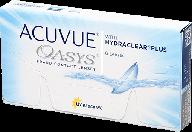
Review on Dosimeter scintillation RadiaCode-101 with spectrometer function by Stanislaw Kobylka (S ᠌

I am very happy with this purchase, I will advise everyone!
Despite the shortcomings, the device provides simply fantastic functionality for its money! Moreover, half of the shortcomings will eventually be eliminated in the next firmware and editions of the instructions. Those who buy the device now will be able to download the ate later without any problems and get accurate dose readings that take into account the radiation spectrum. Well, how to use the spectrum scale is already clear from my review, and they will probably add it to the next instruction. I strongly recommend to buy: you will not get so many features in such a small case for such money anywhere else. For now, you will need to keep in mind some features of the work, but after the release of new firmware, you will generally get an almost perfect device. The case, if the sharp edges interfere strongly, can literally be processed with a file.
- - High sensitivity to gamma radiation. - The ability to measure the spectrum of gamma radiation, both when connected to external devices, and using the device autonomously. - Compact dimensions. - Long, weeks, time of continuous operation without recharging. - Unprecedentedly low, as for such functionality, price.
- - On the seemingly rounded case there are sharp edges. - There is no account of the radiation spectrum when measuring the dose. Because of this, the device can give a significant error even in everyday situations. So, for example, as you can see in the attached photo, on my table the RadiaCode 101 shows 02022 µSv/h, while the RadiaScan 701 lying close, which has travel compensation with stiffness, only 02022 µSv/h. At the same time, it cannot be said that the 101st always overstates by one and a half times, no. It depends on the spectrum of gamma radiation in a particular place. Theoretically, in some cases, it can even slightly (really not very important) underestimate the readings, and in other cases it will overestimate the readings by an order of magnitude. The manufacturer is aware of the problem and is working on creating new firmware, but this is a complex engineering task, so it will take some more time to create it. In the meantime, the ate hasn’t been released, just don’t forget to check the spectrum: if the radiation peak is to the left of the first division of the scale, falls at energies less than 100 keV, then the device may overestimate the readings, you shouldn’t worry too much about the increased numbers. - Although the device is able to show the radiation spectrum on its screen, the energy scale is not signed. Can you figure out which isotope spectra are in the photographs? It seems that no . Because. Since the isotopes were known to me in advance, I was able to determine what each was on the scale. is 100 keV, each | is 500 keV, and each ^ is 1000 keV. Why isn't this in the manual? Riddle . I hope they will add it in the next edition. Yes, don't forget to use both linear and logarithmic modes. As you can see in the photos, the 1461 keV peak from potassium-40 is only visible in logarithmic. - Although the device responds to pure beta emitters, at least to strontium-90, but its sensitivity to them is very low. It, in fact, captures not the beta radiation itself, but the secondary X-ray radiation that occurs when fast electrons interact with matter.
New products
Comments (0)
Top products in 💣 Hazardous Material Handling

SPILLFIX - 2-In-1 Organic Spill Absorbent And Sweeping Compound In A 9L Bag - Easy-To-Use, Safe, And Versatile Absorbent For Hazardous And Non-Hazardous Spills

7 Review

Contact lenses Acuvue OASYS with Hydraclear Plus, 6 pcs., R 8.4, D -5.5

51 Review

Floor fan, wireless, smart Smartmi Standing Fan 3 PNP6005EU, white

19 Review

🥦 Enhanced Accuracy Detector: Greentest Nitrate Vegetable Testing Device

5 Review
Another interesting products

🔥 FiberShield: Enhanced Blanket Suppression with JJ CARE Fiberglass

9 Review

Foxelli Lightweight Hooded Rain Poncho: Ultimate Occupational Health & Safety Gear in Emergency Response Equipment

9 Review

GRANDORF SINGLE GRAIN CAT ADULT SKIN & COAT CARE WHITE FISH & TURKEY

26 Review

Arcturus Heavy Military Wool Blanket: A Must-Have for Occupational Health & Safety!

11 Review

